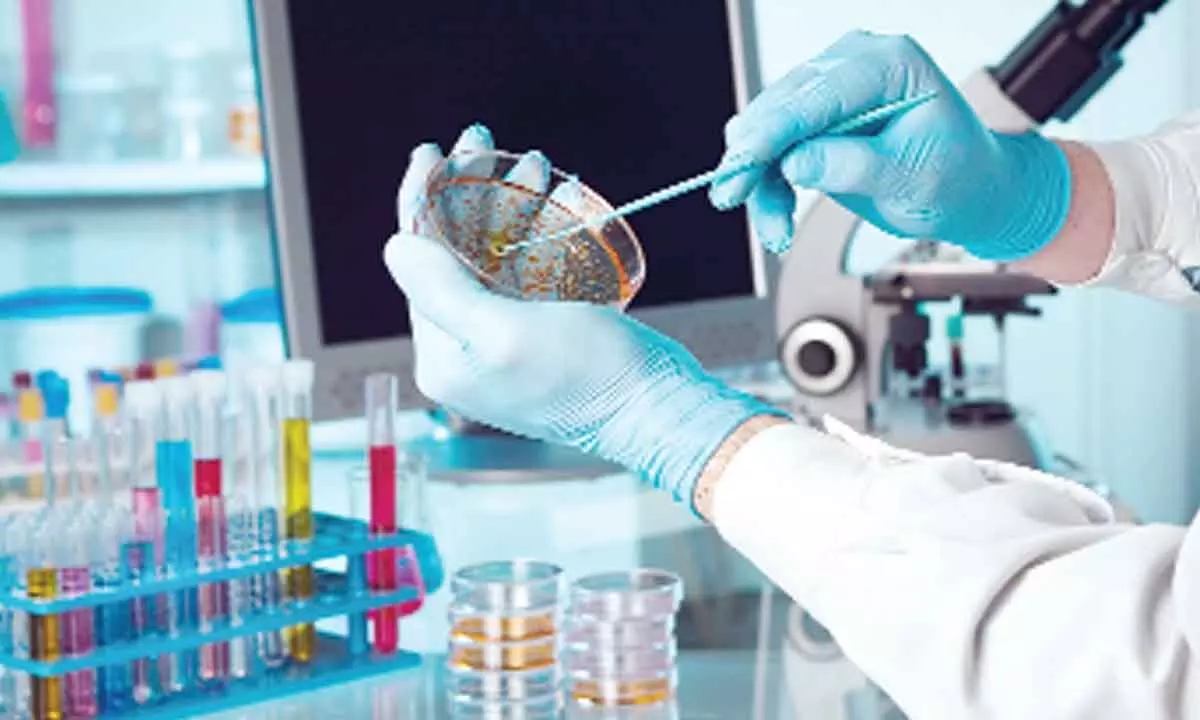Declining trend in R&D funding in pharma sector a cause for worry
The amount released by the Central govt towards drug development and R&D has come down by almost 50% in the last 2 fiscal years
image for illustrative purpose

The declining trend in funding for drug development and research and development (R&D) in the pharmaceutical sector is a cause for worry. According to the data available with the Union Ministry of Chemicals and Fertilisers, the amount released by the Central government towards drug development and R&D through the Biotechnology Industry Research Assistance Council (BIRAC), the public sector undertaking of Department of Biotechnology (DBT), has come down by almost 50 per cent in the last two fiscal years.
The disbursement declined drastically in 2020-21, during when the Covid-19 pandemic hit the country and the government allocated more funds for vaccines and drugs to fight the pandemic, as compared to the year 2019-20. BIRAC has disbursed Rs 4.19 crore in the year 2021-22, as compared to Rs 4.98 crore in 2020-21 and Rs 8.26 crore in 2019-20.
The total disbursement during these three years was around Rs 17.43 crore. DBT, through BIRAC, facilitates implementation of R&D projects for drug discovery in the areas of tuberculosis (TB), antimicrobial resistance (AMR), diabetes, cancer, wound management, autoimmune disorders and rare diseases, through the regular schemes.
Besides BIRAC, the R&D investment by pharma public sector undertakings Karnataka Antibiotics & Pharmaceuticals Ltd (KAPL), and Hindustan Antibiotics Ltd (HAL) has also declined considerably from Rs 1.25 crore in 2019-20 to Rs 41.24 lakh in 2021-22 and from Rs 1.28 crore in 2019-20 to Rs 92.66 lakh in 2021-22, respectively. Bengal Chemicals & Pharmaceuticals Ltd (BCPL), another PSU under the Ministry, has invested Rs 11 lakh, Rs 15 lakh and Rs 16 lakh in the years from 2019-2020, 2020-2021 and 2021-2022, respectively.
But the government seems to be seized of the issue which is clear from the fact that the Department of Pharmaceuticals (DoP) had come out with a policy to catalyse research and development (R&D) and innovation in pharmaceutical and medical devices sectors in India. The policy aims to encourage R&D in Pharma-MedTech sector, and promoting innovation for India to become a leader in drug discovery and innovative medical devices through incubating an entrepreneurial environment.
The policy focuses on simplifying regulatory processes to enable rapid drug discovery and development and innovation in medical devices; exploring mechanisms to incentivise private sector investment in research and evaluate various funding mechanisms including budgetary support, venture capital, CSR funding etc., and fiscal incentives to support innovation; and strengthening the R&D ecosystem through increased collaboration between industry and academia in order to develop mechanisms to dovetail research as per requirement of the industry.
On the regulatory front, which is currently geared towards assuring safety and efficacy and not differentiate in favour of innovation, the policy contemplates to create a regulatory bias in favour of innovation and original research by mandating all regulators (as there are several regulators and agencies involved in the approval processes) to work together to reduce process overlapping and establish timelines for requisite approvals.
The government would undertake a review of the multiple legislations impacting R&D in pharma and medical devices sectors with a view to remove inconsistencies and redundancies. This could include measures such as exemption of products that are cultured and cultivated artificially under controlled conditions and not impacting natural resources from the Biological Diversity Act, review Drug Price Control Order 2013 to enable differential pricing for innovation with therapeutic benefits, among others.
In yet another positive step, the Department of Pharmaceuticals (DoP) has set up seven National Institutes of Pharmaceutical Education & Research (NIPERs) as institutes of national importance to nurture and promote quality and excellence in pharmaceutical education and research in India, which besides imparting postgraduate and doctorate education, conduct high end research in various pharma specialisations.
DoP has also set up an Inter- Departmental Committee (IDC) to periodically review and coordinate research work undertaken by various organisations under different Ministries/ Departments so as to ensure optimum utilisation of funds and avoid overlapping and duplication of efforts and resources. NIPERs are actively and dedicatedly engaged in cutting-edge advanced translational pharmaceutical research in various pharma specialisations. The areas of research include cancer, diabetes, neurodegenerative diseases, TB, phytopharmaceuticals, new process development of generic API molecules, drug delivery system, development of nano-drug formulations, etc. Apart from the funding through BIRAC, Council of Scientific and Industrial Research (CSIR) through its various constituent laboratories is engaged in the R&D of the process technologies for Active Pharmaceutical Ingredients (API) and intermediates. CSIR has approved various significant projects, including projects on basic research, in the area of drug discovery and development worth about Rs 284.88 crore for the period 2020-21 to 2025-26. Overall, the government seems to be moving in the right direction. It should take more steps to reverse the declining trend in R&D funding in pharma sector as discovery of new drugs is crucial with the changing pattern of diseases.
(The author is freelance
journalist with varied experience
in different fields)

